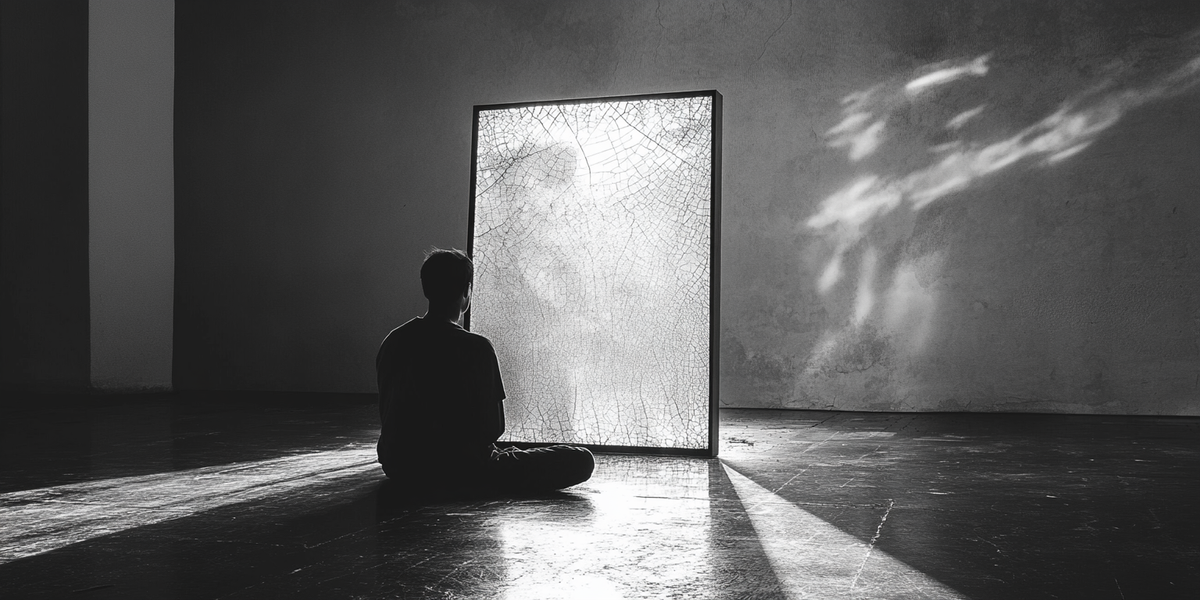- 1. Idealization is the entry point into any field.
Psychoanalysis is no exception. It draws those who long for depth, salvation, and meaning.
As a result, idealization becomes subtle, normalized, and even institutionally encouraged.
Maturity is not about abandoning passion, but seeing the projections and illusions beneath it. - 2. De-idealization is an honest and painful process.
It requires admitting we once relied on it, even worshipped it—and may have used that faith to hurt others.
It doesn’t mean rejecting the field, but refusing to excuse its blind spots.
To de-idealize is not to leave, but to stay and take responsibility for its reality. - 3. In China, the idealization of psychoanalysis is rooted in postcolonial shame and humiliation.
We long to import “Western depth” to prove our own cultural worth.
But this isn’t transformation—it’s mimicry. It’s not understanding—it’s submission. - 4. Psychoanalysis is not neutral. It has a specific historical context.
Late 19th-century Europe, whiteness, masculinity, urban bourgeois values—
These shaped its theoretical gaze and defined its blind spots. - 5. Its training system is deeply rooted in patriarchal logic.
It privileges hierarchy, inheritance, and obedience, casting the “neutral analyst” as a detached father figure.
This is not free intellectual inquiry, but a ritual of familial recognition. - 6. Psychoanalysis has a long history of pathologizing marginalized groups.
Queer people, trans people, women, nonverbal subjects, non-Western cultures, people with mental illness—
These lives have often been seen not as human experiences, but as deviations. - 7. Psychoanalysis was born from trauma—and turned trauma into structural rigidity.
Unprocessed pain was passed down through training and imitation,
disguised as tradition but functioning as defensive repetition.
Learning not to turn inherited trauma into power or humiliation is a task each of us must face.
If we don’t, the wounds once interpreted in analysis will return—through pedagogy, supervision, and silence. - 8. Psychoanalysis is a power system.
It often uses “professionalism” and “neutrality” to conceal projection, control, and harm.
Institutional violence is often renamed “necessary transference” or “analytic process.” - 9. Psychoanalysis relies on a culture of silence.
It avoids addressing key issues, or wraps them in abstraction labeled as depth or neutrality.
But this isn’t just a style—it’s a form of power.
If we listen dynamically, this silence is a form of disavowal.
And this silence is not unique to psychoanalysis—it exists wherever structural violence remains unacknowledged. - 10. Psychoanalysis is a model of the mind—but not the only one.
It often excludes and resists neuroscience, sociology, feminism, and interdisciplinary dialogue.
It seals itself off, refusing to evolve as living knowledge. - 11. Knowledge and theory are never neutral.
They always serve a position, protect a system, or sustain power.
Psychoanalysis is no exception.
When we use it, we must ask: Who is allowed to speak in this system? Whose voice has been silenced? - 12. Psychoanalysis is deeply flawed. That’s real.
This is not accidental or rare—it is systemic. - 13. But its flaws do not exceed human nature.
Its failures come from humanity itself, and from particular social conditions.
Its violence is not an exception, but an expression of our collective defenses. - 14. This is why psychoanalysis cannot renew itself alone.
It needs feminism, queer theory, neuroscience, and sociology—not as supplements, but as medicine.
These aren’t optional perspectives. They are conditions for survival. - 15. Psychoanalysis is deeply flawed. Yes.
But that is also why we still need it.
Because it can name illusions, confront denial, and face harm—
Only if it begins by being honest with itself.
Only if each of us is honest with ourselves.
This is not difficult. It is impossible.
And real psychoanalysis begins precisely in that impossibility.
English
Manifesto of De-Idealizing Psychoanalysis
